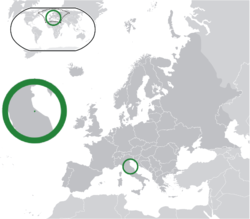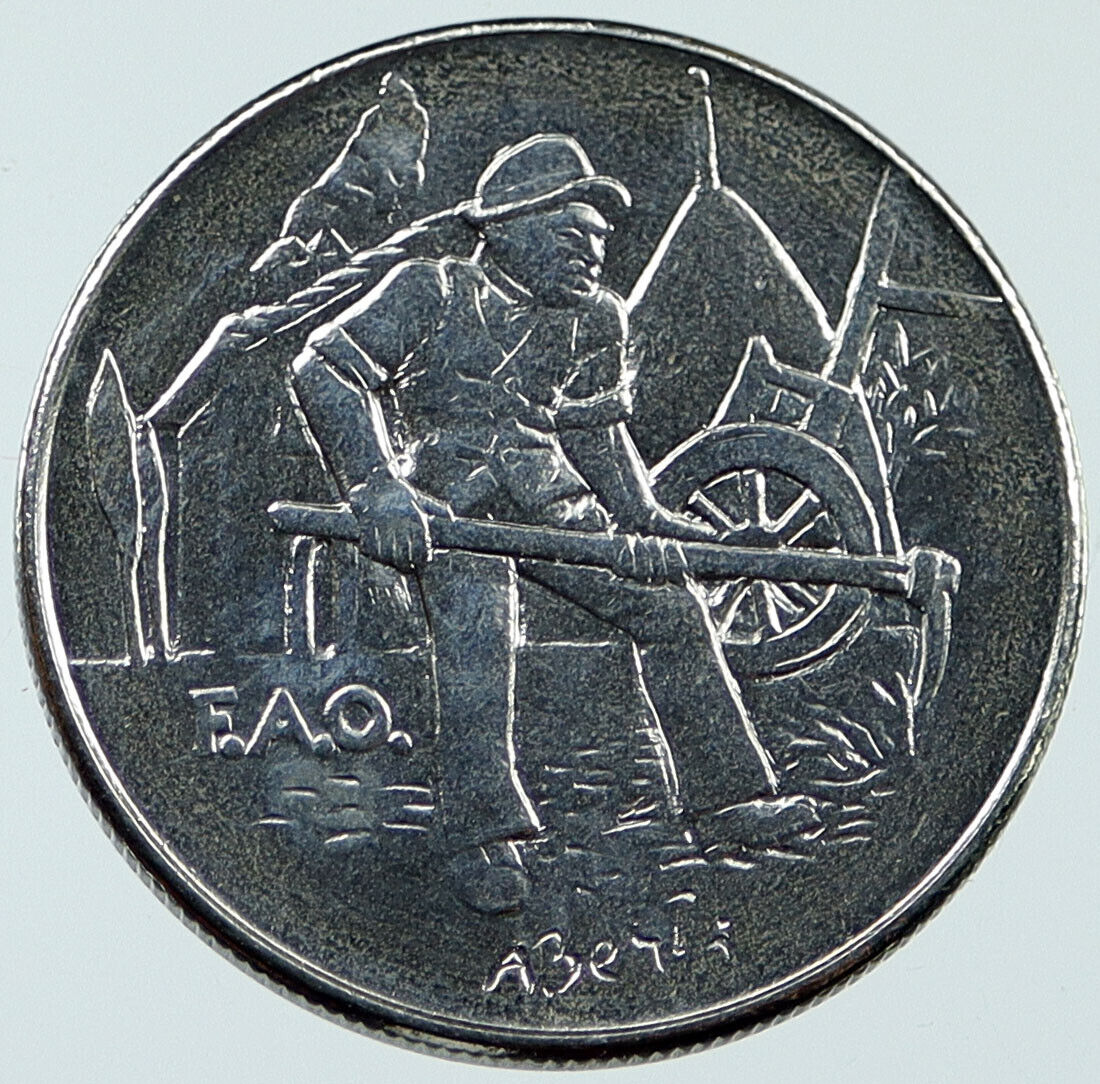|
San Marino – Endangered Animals
1996 Proof Silver 10,000 Lire 33mm (22.04 grams) 0.835 Silver (0.5906 oz. ASW)
Reference: KM# 341
REPUBBLICA DI SAN MARINO 1996 BINO BINI PERNAZZA INC., Crowned pointed shield within sprigs.
MONDO ANIMALE IN PERICOLO 10000 Lire L.S., Wolves
You are bidding on the exact item pictured, provided with a Certificate of Authenticity and Lifetime Guarantee of Authenticity.
An endangered species is a species which has been categorized as very likely to become extinct. Endangered (EN), as categorized by the International Union for Conservation of Nature (IUCN) Red List, is the second most severe conservation status for wild populations in the IUCN’s schema after Critically Endangered (CR).
In 2012, the IUCN Red List featured 3079 animal and 2655 plant species as endangered (EN) worldwide. The figures for 1998 were, respectively, 1102 and 1197.
Many nations have laws that protect conservation-reliant species: for example, forbidding hunting, restricting land development or creating preserves. Population numbers, trends and species’ conservation status can be found at the lists of organisms by population.
Conservation status
The conservation status of a species indicates the likelihood that it will become extinct. Many factors are considered when assessing the status of a species; e.g., such statistics as the number remaining, the overall increase or decrease in the population over time, breeding success rates, or known threats. The IUCN Red List of Threatened Species is the best-known worldwide conservation status listing and ranking system.
Over 50% of the world’s species are estimated to be at risk of extinction. Internationally, 199 countries have signed an accord to create Biodiversity Action Plans that will protect endangered and other threatened species. In the United States, such plans are usually called Species Recovery Plans.
IUCN Red List
Though labelled a list, the IUCN Red List is a system of assessing the global conservation status of species that includes “Data Deficient” (DD) species – species for which more data and assessment is required before their status may be determined – as well species comprehensively assessed by the IUCN’s species assessment process. Those species of “Near Threatened” (NT) and “Least Concern” (LC) status have been assessed and found to have relatively robust and healthy populations, though these may be in decline. Unlike their more general use elsewhere, the List uses the terms “endangered species” and “threatened species” with particular meanings: “Endangered” (EN) species lie between “Vulnerable” (VU) and “Critically Endangered” (CR) species, while “Threatened” species are those species determined to be Vulnerable, Endangered or Critically Endangered.
Endangered (EN) Faces a high risk of extinction in the near future.
- Examples: Mexican Wolf
- African penguin
- African wild dog[a]
- Amur tiger
- Asian elephant
- Bengal tiger
- Australasian bittern
- blue whale
- bonobo
- Bornean orangutan
- common chimpanzee
- dhole
- eastern lowland gorilla
- Ethiopian wolf
- Flores crow
- hispid hare
- giant otter
- Goliath frog
- grey parrot
- green sea turtle
- loggerhead sea turtle
- Grevy’s zebra
- Humblot’s heron
- Iberian lynx
- Indian pangolin
- Japanese crane
- Japanese night heron
- Lear’s macaw
- Malayan tapir
- markhor
- Malagasy pond heron
- mountain gorilla
- yellow headed amazon
- purple-faced langur
- red-breasted goose
- Rothschild’s giraffe
- South Andean deer
- anoa
- takhi
- Toque macaque
- Vietnamese pheasant
- volcano rabbit
- wild water buffalo
- white-eared night heron
- Whooping crane
- fishing cat
- tasmanian devil
- red panda

San Marino, officially the Republic of San Marino (Italian: Repubblica di San Marino), also known as the Most Serene Republic of San Marino (Italian: Serenissima Repubblica di San Marino), is an enclaved microstate surrounded by Italy, situated on the Italian Peninsula on the northeastern side of the Apennine Mountains. Its size is just over 61 km2 (24 sq mi), with a population of 33,562. Its capital is the City of San Marino and its largest settlement is Dogana in the municipality of Serravalle. San Marino has the smallest population of all the members of the Council of Europe. With Italian being the official language, along with strong financial and ethno-cultural connections, San Marino maintains close ties to its much larger neighbour; it is located close to the riviera of Rimini, one of Italy’s main coastal resort areas.
 The country derives its name literally from Saint Marinus, a stonemason originating from the Roman colony on the island of Rab, in modern-day Croatia. In AD 257, Marinus, according to legend, participated in the reconstruction of Rimini’s city walls after their destruction by Liburnian pirates. Marinus then went on to found an independent monastic community on Monte Titano in AD 301; thus, San Marino lays claim to be the oldest extant sovereign state as well as the oldest constitutional republic. The country derives its name literally from Saint Marinus, a stonemason originating from the Roman colony on the island of Rab, in modern-day Croatia. In AD 257, Marinus, according to legend, participated in the reconstruction of Rimini’s city walls after their destruction by Liburnian pirates. Marinus then went on to found an independent monastic community on Monte Titano in AD 301; thus, San Marino lays claim to be the oldest extant sovereign state as well as the oldest constitutional republic.
San Marino is governed by the Constitution of San Marino (Leges Statutae Republicae Sancti Marini), a series of six books written in Latin in the late 16th century, that dictate the country’s political system, among other matters. The country is considered to have the earliest written governing documents, or constitution, still in effect.
 The country’s economy mainly relies on finance, industry, services and tourism. It is among one of the wealthiest countries in the world in terms of GDP (per capita), with a figure comparable to the most developed European regions. San Marino is considered to have a highly stable economy, with one of the lowest unemployment rates in Europe, no national debt and a budget surplus, and has the world’s highest rate of car ownership, being the only country with more vehicles than people. The country’s economy mainly relies on finance, industry, services and tourism. It is among one of the wealthiest countries in the world in terms of GDP (per capita), with a figure comparable to the most developed European regions. San Marino is considered to have a highly stable economy, with one of the lowest unemployment rates in Europe, no national debt and a budget surplus, and has the world’s highest rate of car ownership, being the only country with more vehicles than people.
The cuisine of San Marino is extremely similar to Italian, especially that of the adjoining Emilia-Romagna and Marche regions, but it has a number of its own unique dishes and products. Its best known is probably the Torta Tre Monti (“Cake of the Three Mountains” or “Cake of the Three Towers”), a wafer layered cake covered in chocolate depicting the Three Towers of San Marino. The country also has a small wine industry.
There are 220 km (140 mi) of roads in the country, the main road being the San Marino Highway. Authorities license private vehicles with distinctive Sammarinese license plates, which are white with blue figures and the coat of arms, usually a letter followed by up to four numbers. Many vehicles also carry the international vehicle identification code (in black on a white oval sticker), which is “RSM”.
There are no public airports in San Marino, but there is a small private airstrip located in Torraccia and an international heliport located in Borgo Maggiore. Most tourists who arrive by air land at Federico Fellini International Airport close to the city of Rimini, then make the transfer by bus.
Two rivers flow through San Marino, but there is no major water transport, and no port or harbour.
UNESCO
The site San Marino: Historic Centre and Mount Titano became part of the UNESCO World Heritage List in 2008. The decision was taken during the 32nd Session of the UNESCO World Heritage Committee composed of 21 Countries convened in Québec, Canada.
Music
The country has a long and rich musical tradition, closely linked to that of Italy, but which is also highly independent in itself. A well-known 17th century composer is Francesco Maria Marini.
San Marino has taken part in the Eurovision Song Contest eight times, achieving its first final in 2014 with the third participation of Valentina Monetta and the song “Maybe”.
|






 The country derives its name literally from Saint Marinus, a stonemason originating from the Roman colony on the island of Rab, in modern-day Croatia. In AD 257, Marinus, according to legend, participated in the reconstruction of Rimini’s city walls after their destruction by Liburnian pirates. Marinus then went on to found an independent monastic community on Monte Titano in AD 301; thus, San Marino lays claim to be the oldest extant sovereign state as well as the oldest constitutional republic.
The country derives its name literally from Saint Marinus, a stonemason originating from the Roman colony on the island of Rab, in modern-day Croatia. In AD 257, Marinus, according to legend, participated in the reconstruction of Rimini’s city walls after their destruction by Liburnian pirates. Marinus then went on to found an independent monastic community on Monte Titano in AD 301; thus, San Marino lays claim to be the oldest extant sovereign state as well as the oldest constitutional republic.  The country’s economy mainly relies on finance, industry, services and tourism. It is among one of the wealthiest countries in the world in terms of GDP (per capita), with a figure comparable to the most developed European regions. San Marino is considered to have a highly stable economy, with one of the lowest unemployment rates in Europe, no national debt and a budget surplus, and has the world’s highest rate of car ownership, being the only country with more vehicles than people.
The country’s economy mainly relies on finance, industry, services and tourism. It is among one of the wealthiest countries in the world in terms of GDP (per capita), with a figure comparable to the most developed European regions. San Marino is considered to have a highly stable economy, with one of the lowest unemployment rates in Europe, no national debt and a budget surplus, and has the world’s highest rate of car ownership, being the only country with more vehicles than people. 




